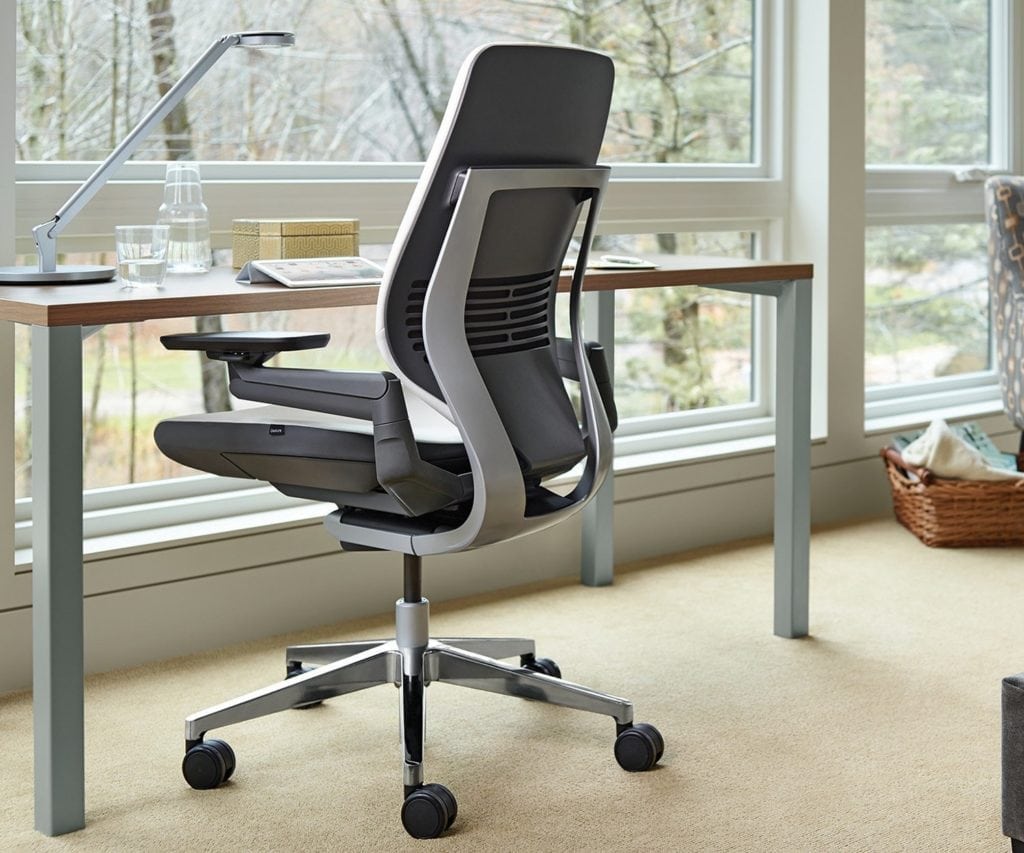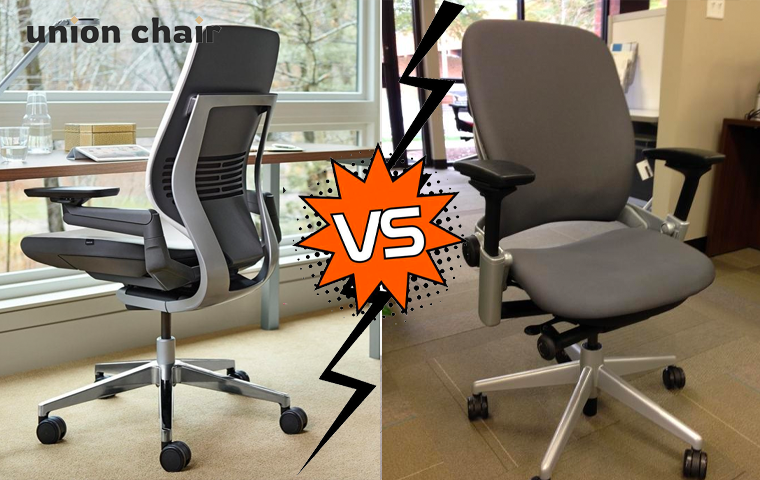Physical Address
304 North Cardinal St.
Dorchester Center, MA 02124
Physical Address
304 North Cardinal St.
Dorchester Center, MA 02124

The Steelcase Gesture is a solid chair. With the same score as the Leap chair, it is basically positioned in the 1-B spot for our best office chairs for 2023.

The Steelcase Gesture is a solid chair that has been designed with the discerning buyer in mind. This review will delve into the key features of the chair, its seat depth adjustment, comparison with other ergonomic chairs, and details about its warranty and price. We will also compare it with the Steelcase Leap chair to help you make an informed decision.
The Steelcase Gesture is a high-end chair that offers a range of adjustments to fit your body and work style. The human body’s movement served as inspiration for its creation, which supports how we interact with modern technologies. This chair accommodates a wide range of postures and sizes, making it a versatile choice for any office environment.
One of the standout features of the Steelcase Gesture is its seat depth adjustment. This feature caters to different leg lengths, ensuring proper circulation and reducing strain. The chair also boasts adjustable height, backrests, and armrests, which are key features of modern ergonomic chairs.
In this comprehensive Steelcase Gesture review, we will delve into the advantages and disadvantages of the Steelcase Gesture office chair. Whether you’re in search of a chair with superior build quality or are mindful of the price, our detailed analysis will guide you through the key aspects of this exceptional chair.
By considering these pros and cons, you can determine if the Steelcase Gesture chair aligns with your needs and expectations. From its adjustable arms to its seat comfort, this chair offers a range of benefits, but it’s essential to weigh these against the potential drawbacks, such as the price and lack of certain adjustments.
Established in 1912 as the Metal Office Furniture company, Steelcase has a long history of innovation. Its first patent was for a metal wastebasket, a design intended to improve office safety. By 1919, it had begun to form dealer networks and offer its office furniture products across the USA. In 1954, it changed its name to Steelcase Inc., and its brand continued to grow. By 1998, Steelcase Inc. became a publicly traded company.
The Steelcase Gesture chair is more than just an office chair; it’s a pioneering innovation designed to adapt to contemporary work environments. Developed through meticulous research on human posture and movement, the chair offers unparalleled support and customization options. It’s a chair that evolves with technology, ensuring you don’t just sit, but sit well.

Steelcase didn’t just stumble upon the Gesture chair’s design. It was a calculated endeavor, backed by a comprehensive study involving over 2,000 individuals from around the globe. This research led to the identification of nine new postures, all influenced by the way we interact with technology today. These postures were previously unaddressed by existing seating solutions, prompting the creation of the Gesture chair.
| Feature | Dimension |
|---|---|
| Seat Height | 16” – 20.5” |
| Seat Depth | 15.75” – 18.75” |
| Seat Width | 19.25” |
| Arm Height | 7.25” – 11.5” |
| Arm Width | 10.25” – 22.5” |
| Back Height/Width | 24.0625” H / 16.25” W |
| Overall Dimensions | 24.75” D x 27” W x 38.5” – 43.5” H |
| Weight Rating | 400 lbs. |
The base model of the Steelcase Gesture chair starts at $1,107.00 and includes:
The Gesture chair is not just an office chair; it’s an investment in your well-being. Designed with 3D LiveBack® technology, the chair aligns perfectly with your spine’s natural S-shape. The flexible seat edge relieves pressure points under your thighs, while the 360° arms offer comfortable support as you multitask across devices. With all adjustments conveniently located within arm’s reach, the Gesture chair is ideal for those who value precision and comfort.
The Steelcase Gesture chair is a revolutionary seating solution that adapts to you, not the other way around. With its extensive research and user-centric design, it sets a new standard in ergonomic office seating. If you’re looking for a chair that offers long-lasting comfort and support, especially in a tech-savvy world, the Gesture chair is the one for you.
When it comes to high-end office chairs, two names often stand out: the Steelcase Gesture and the Steelcase Leap. Both chairs are celebrated for their ergonomic design and quality, but they cater to different needs and preferences. In this comparative analysis, we’ll delve into the similarities and differences between the Steelcase Leap and Gesture, focusing on features, price, and user experience.

The decision between the Steelcase Leap vs Gesture comes down to individual preferences and needs. If arm and seat adjustability are paramount, the Gesture may be the ideal choice. If back support and sustainability are higher priorities, the Leap might be more suitable. Both chairs represent a significant investment in comfort and productivity. Understanding their unique features and benefits will help you make an informed decision that aligns with your specific requirements.
The Steelcase Gesture chair has garnered attention for its innovative design and ergonomic features, but the question on many potential buyers’ minds is, “Is Steelcase Gesture worth it?” This analysis delves into the value proposition of the Steelcase Gesture, considering its Steelcase Gesture price, features, and competition.
The Steelcase Gesture price may be a barrier for some, but for those seeking a chair that prioritizes comfort, adaptability, and innovation, the investment may well be justified. The Gesture’s unique features and robust warranty make it a compelling option for the discerning buyer.
The Steelcase Gesture is a top-tier ergonomic office chair that offers a high level of adjustability and comfort. It’s a fantastic choice for anyone looking to invest in their workspace and improve their comfort and productivity. Whether the Steelcase Gesture is worth it or not will depend on individual preferences, budget considerations, and specific ergonomic needs.